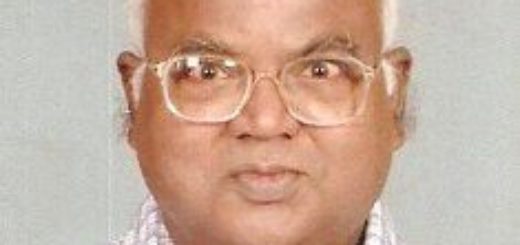APPEAL TO POPE FRANCIS TO REINSTATE WOMEN’S DIACONATE (Part II)

Feasts of St Phoebe and St Gregory the Great, 3 September 2015
Wijngaards Institute, 111a High Street, Rickmansworth, Herts – WD3 1AN, UK.
 (Note: Fr. John Wijngaards, originally from Holland has been a great missionary in the 1960ies in Andhra Pradesh. He was at the same time a professor at St.John’s Seminary, AP, a well known theologian championing the cause of Women’s ordination as well. He worked with New Leader of Chennai to bring out Andhra edition of NL edited then by james kottoor..He had to return to Holland at the call of his superiors. He was one of the organizers of the First Women’s Ordination world wide in the Catholic Church in Dublin in 2001. Now he is stationed in UK at the above address, running Wijingaards Institute of Catholic Research, at the above address. On Sept.3rd feasts of S.Phoebe and St.Gregory the Great, his institute has sent the letter below to Pope Farncis to promote the cause of women to Diaconate. james kottoor, editor)
(Note: Fr. John Wijngaards, originally from Holland has been a great missionary in the 1960ies in Andhra Pradesh. He was at the same time a professor at St.John’s Seminary, AP, a well known theologian championing the cause of Women’s ordination as well. He worked with New Leader of Chennai to bring out Andhra edition of NL edited then by james kottoor..He had to return to Holland at the call of his superiors. He was one of the organizers of the First Women’s Ordination world wide in the Catholic Church in Dublin in 2001. Now he is stationed in UK at the above address, running Wijingaards Institute of Catholic Research, at the above address. On Sept.3rd feasts of S.Phoebe and St.Gregory the Great, his institute has sent the letter below to Pope Farncis to promote the cause of women to Diaconate. james kottoor, editor)
(Continued from Part I)
The First Council of Nicea (325 AD), while declaring invalid the diaconate of women in the sect of Paul of Samosata “because those women had not received the imposition of hands”, implicitly acknowledged women’s diaconate as a valid order in the Church.21 The Council of Chalcedon (451 AD) imposed a minimum age on female deacons, as it did on male deacons and priests, an injunction repeated by the Council of Trullo (692 AD).22
The ministry of women deacons is commended by the Fathers of the Church: St Clement of Alexandria (150-215), Origen (185-255), Epiphanius of Salamis (315-403), St Basil of Caesaria (329-379), St John Chrysostom (344-407),27 St Gregory of Nyssa (335-394)28 and many others.
Just like male deacons, women deacons are extensively covered in early Pastoral Manuals, such as the Didascalia of the Apostles (ca 250 AD)30 and the Apostolic Constitutions (ca 380 AD)31. The latter contains early ordination rites for bishops, priests and deacons, including for women deacons.32 Church legislation, such as under Emperor Theodosius (390 AD)33 and Emperor Justinian I (529-564)34 gives women deacons the same rights and duties as other members of the clergy, apart from some specific provisions.
Many Popes endorsed women’s diaconate. Representatives of Pope Sylvester I (314-335) attended the Council of Nicea which accepted women deacons. Pope Innocent I (401-417) corresponded with John Chrysostom, the archbishop of Constantinople, who regularly ordained women deacons. The Council of Chalcedon, which imposed an age limit on women deacons, was partly organised by Pope Leo the Great (440-461). Pope Gregory I (440-461) composed a sacramentary which contained the ordination prayer for a woman deacon, identical to the prayer for a male deacon. At the request of Emperor Charlemagne, Pope Adrian I (772-795) sent a model sacramentary with ordination rites, the Hadrianum,35 to Gaul. It contained the ordination prayer for women deacons.36
Pastoral need for our time
Though the ordination of women deacons remained known in the West till the Middle Ages,37 it met heavy resistance in many parts of the Latin West. This was due to a bias against menstruation by which it was feared women could pollute the altar38 and the Roman belief that women are inferior to men.39 In the East the ordination of women deacons ceased after 1000 AD by a combination of the fact that the number of adult catechumens diminished and the same fear of menstruation.
Society in our time is rising above such ancient prejudices. Women are now proving their value in education, medicine, science, commerce, government and other spheres of modern life. Women too have been playing a crucial role in the life of the Catholic Church which often amounts to a real diaconal ministry. It is only right that they should be supported and affirmed in this by receiving a full ordination, as their male counterparts do.
Let us recall the teaching of the Early Church: “So, bishop, appoint for yourself fellow-workers in almsgiving, assistants who may co-operate with you towards life. You are to choose and appoint deacons from all the people who are pleasing to you, a man for the administration of the many things which are necessary, a woman however for the ministry of women, since there are houses where you can not send a deacon to the women because of the pagans but you can send a deaconess, and in many other matters there is need for an office of deaconess.” Didascalia 16 § 1 (250 AD)
“The deacon […] is present as a type of Christ, and is therefore to be loved by you. And the deaconess is to be honoured by you as a type of the Holy Spirit.” Didascalia 9 § 3 (250 AD).41
With all best wishes,
yours respectfully in Christ,
the Trustees, Patrons and Staff of the Wijngaards Institute.
















